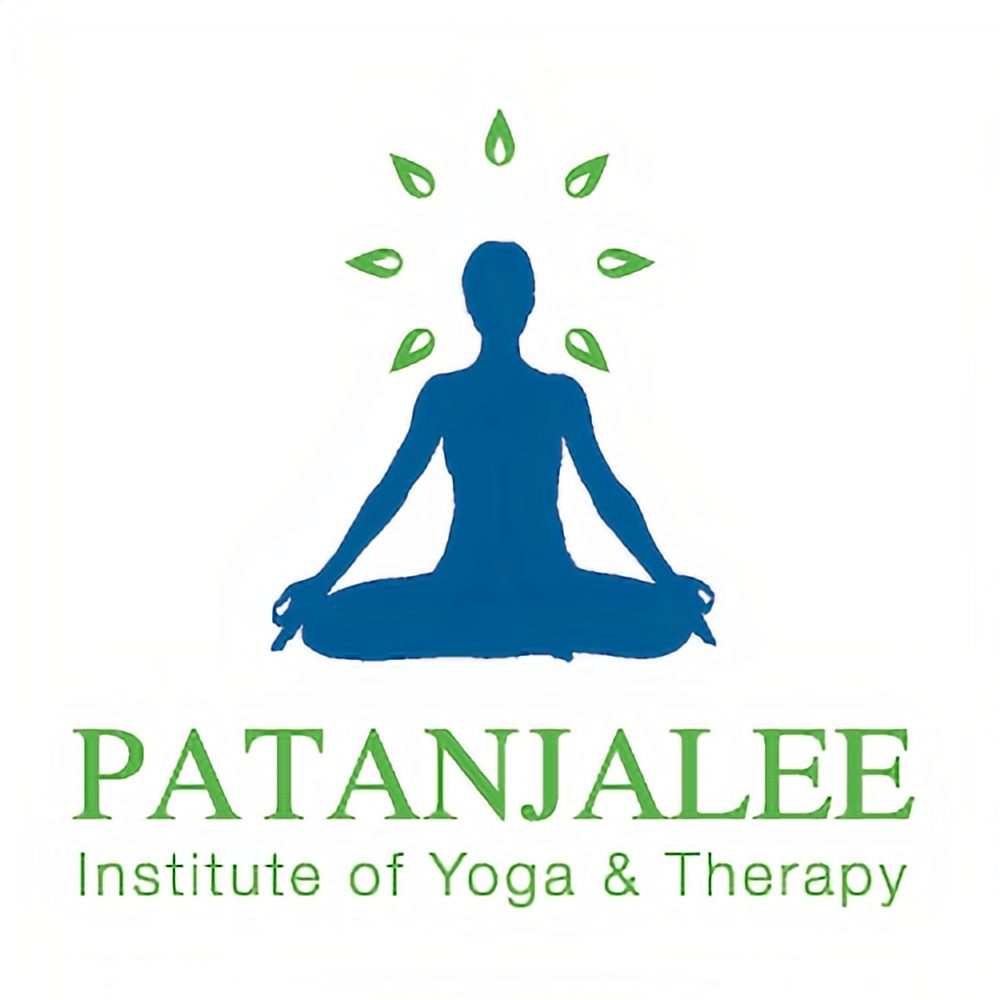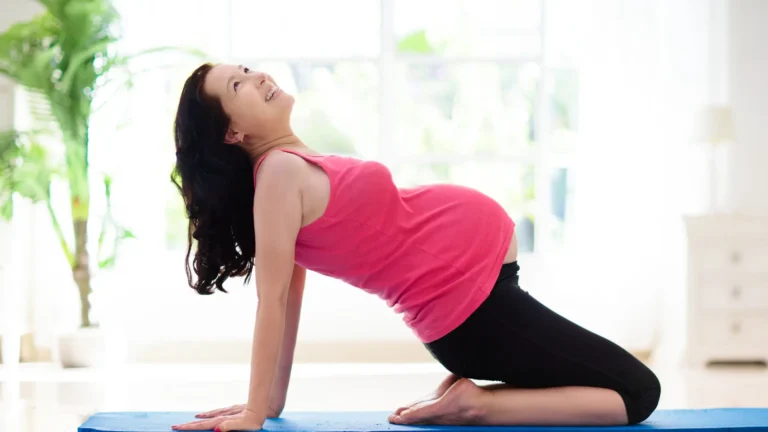When Can You Start Postpartum Yoga After Normal Delivery or C-Section?
Hey new moms! Congrats on the little bundle of joy that’s now your world! I bet you’re brimming with questions, especially about how to get back to feeling like yourself again — and let’s face it, get some of that core strength back. The American College of Obstetricians and Gynecologists suggests that pregnant and postpartum women should aim for moderate exercise for 20 to 30 minutes a day, most days of the week. This helps maintain overall health and supports recovery after childbirth. If yoga was your go-to before pregnancy, or you’re a newbie looking for a gentle way to ease into movement, postpartum yoga is your new BFF. But when can you actually start? And does it matter whether you’ve had a normal delivery or a C-section? Let’s dive in!

First Things First — Listen to Your Body
Alright, before we get into timelines and stretches, the number one thing is your body is in charge. Every postpartum journey is as unique as your new little one. Whether you had a smooth, normal delivery or a complicated C-section, the key to easing back into yoga is listening to your body and, of course, your doctor’s advice. Don’t rush it!
Let’s break it down depending on your delivery type, so you get a clearer picture of when you can roll out that yoga mat.
When to Start Postpartum Yoga After a Normal Delivery
If you had a vaginal delivery without major complications, you can probably start postpartum yoga sooner than you think. But don’t rush into it thinking you’re gonna jump into a full vinyasa flow. Slow and steady is the name of the game.
How Soon is Too Soon?
Most experts recommend waiting 4 to 6 weeks after a normal delivery before starting any form of structured exercise, including yoga. Your body just went through one of the most intense physical experiences it can, so it needs time to recover. That being said, some moms feel ready for very gentle stretches and breathing exercises within the first couple of weeks. These aren’t hardcore yoga moves, but think more along the lines of deep breathing (hello, pranayama!) and stretches that help your posture — especially since you’re probably hunching over a lot while feeding or rocking the baby.
What Can You Start With?
During those early weeks, focus on the basics:
- Breathing exercises (Pranayama): Deep belly breathing will help reconnect with your core muscles and reduce tension.
- Gentle stretches: Think neck rolls, shoulder shrugs, and easy stretches for your back and hips to ease postpartum aches.
- Pelvic floor exercises: These are super important postpartum, helping your body rebuild strength where you need it most.
When your doctor gives you the green light after 4-6 weeks, you can ease into more structured postpartum yoga classes. At online postnatal yoga classes, we have specialized routines that are gentle yet effective, perfect for new moms like you.

Postpartum Yoga After a C-Section: What’s Different?
Now, if you’ve had a C-section, the game changes a bit. This wasn’t just a regular delivery; you had major surgery, so your body needs more time to heal. The recovery window is typically longer, but don’t worry, you’ll be back to those downward dogs in no time!
When Should You Start?
For moms who’ve had a C-section, it’s usually recommended to wait 6 to 8 weeks before jumping into any form of exercise, including yoga. This doesn’t mean you’re doing nothing for those weeks — deep breathing and very gentle movements can be your companions in those early days. However, you need to be super cautious with anything that puts pressure on your core and abdomen. Your body is still healing, especially around the incision area, so those muscles need extra care.
What Can You Start With?
- Gentle breathing exercises (Pranayama): This is your go-to right from the start. Deep belly breathing helps reduce stress, improve blood flow, and aids in gentle core recovery.
- Pelvic floor strengthening: Yep, even after a C-section, pelvic floor exercises are key. They help with bladder control and core strength without putting pressure on your incision.
- Gentle stretching: Once you feel a bit more mobile (after your doctor’s go-ahead), you can start with super gentle stretches for your back, neck, and shoulders.

After 6-8 weeks, if you’re feeling up for it and your doctor gives the green light, you can start introducing yoga into your routine. Explore the tips on Incorporating Yoga into Your Daily Routine: Tips for Home Practice. At this stage, you’ll want to stick with postnatal-specific yoga sequences designed to slowly build strength without straining your core or incision area.
Key Benefits of Postpartum Yoga
No matter how you delivered, postpartum yoga offers amazing benefits:
- Core strength recovery: Whether it was a C-section or vaginal delivery, your core needs some serious TLC. Yoga helps strengthen those muscles without overdoing it.
- Stress relief: Let’s face it, new mom life is stressful! Yoga provides a calming escape, helping to reduce anxiety and boost your mood.
- Improved posture: All those hours of feeding, carrying, and rocking can lead to sore backs and shoulders. Yoga helps realign and relieve tension.
- Pelvic floor strengthening: As mentioned earlier, those muscles went through a lot, and yoga can help gently rebuild strength down there.
- Connection with your body: Postpartum is a time of major transformation. Yoga helps you reconnect with your body and appreciate the amazing work it’s done.
Yoga Poses for New Moms
Whether you’re 6 weeks or 8 weeks postpartum, the following poses are gentle and safe. Just make sure to listen to your body and stop if anything feels uncomfortable.
1. Cat-Cow Stretch (Marjaryasana-Bitilasana)
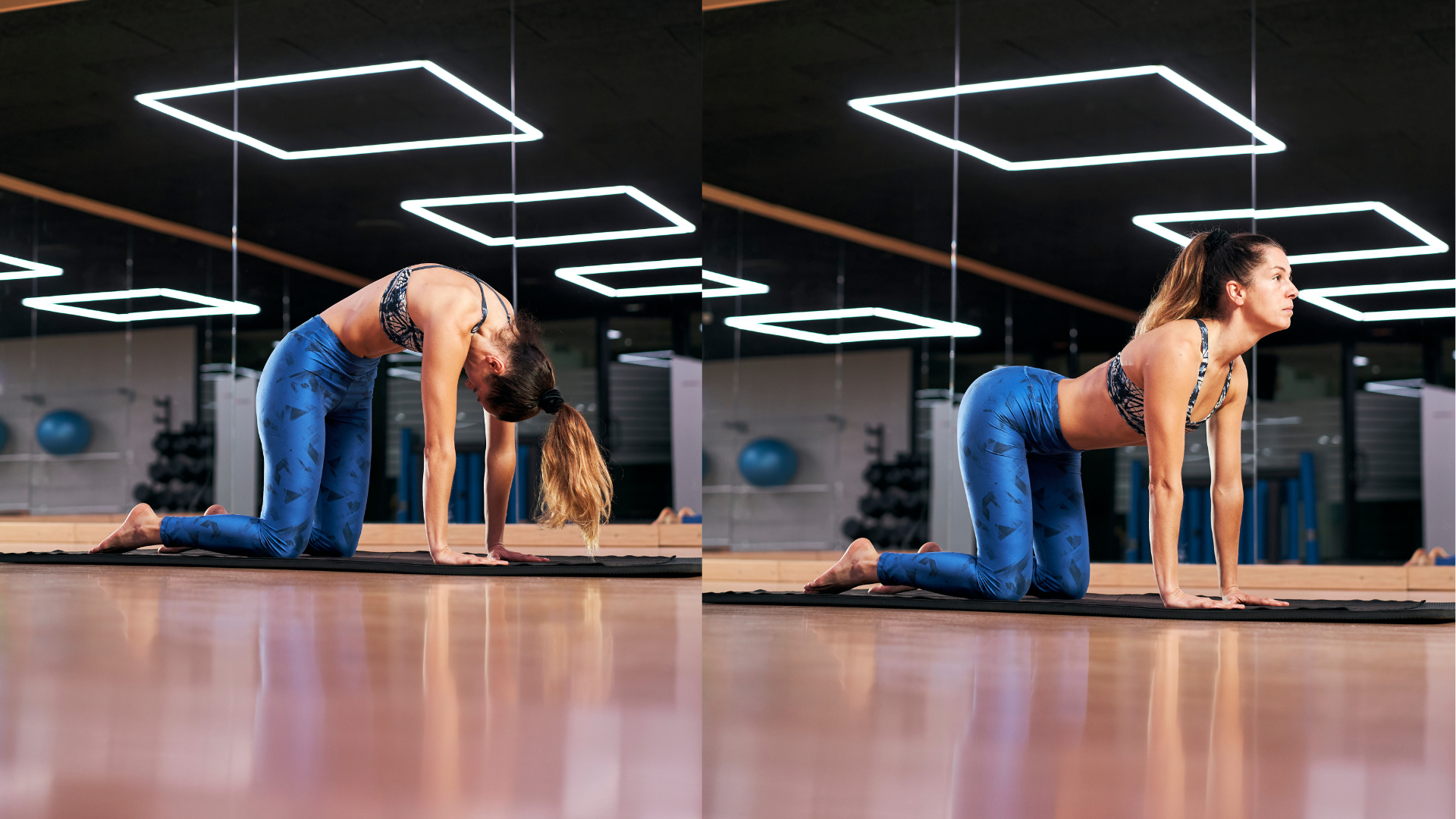
Perfect for relieving back tension from carrying your baby. Start on your hands and knees, inhale as you drop your belly and lift your chest, exhale as you round your back and tuck your chin.
2. Child’s Pose (Balasana)
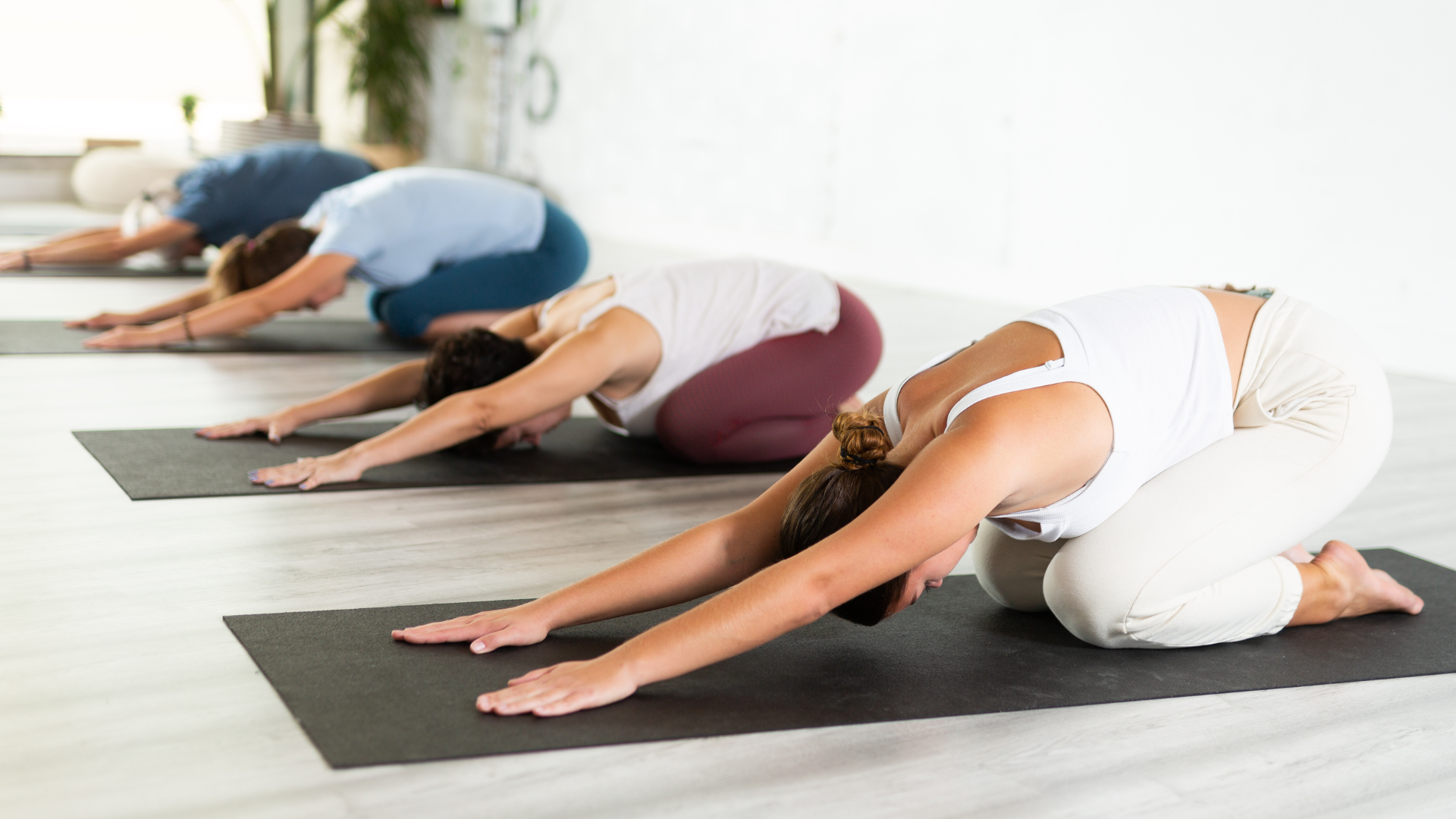
This is a lifesaver for tired moms. It’s gentle, relaxing, and stretches the lower back and hips. Plus, it gives you a moment to breathe and regroup.
3. Bridge Pose (Setu Bandhasana)
Great for strengthening your pelvic floor and lower back. Lie on your back with your knees bent, feet flat on the ground, and slowly lift your hips while squeezing your glutes. Be cautious of this pose if you’re recovering from a C-section — take it slow!

4. Legs Up the Wall (Viparita Karani)
This pose is a major win for tired legs and swollen feet. It’s also great for calming the mind. Lie on your back with your legs extended up against a wall, relax, and breathe.
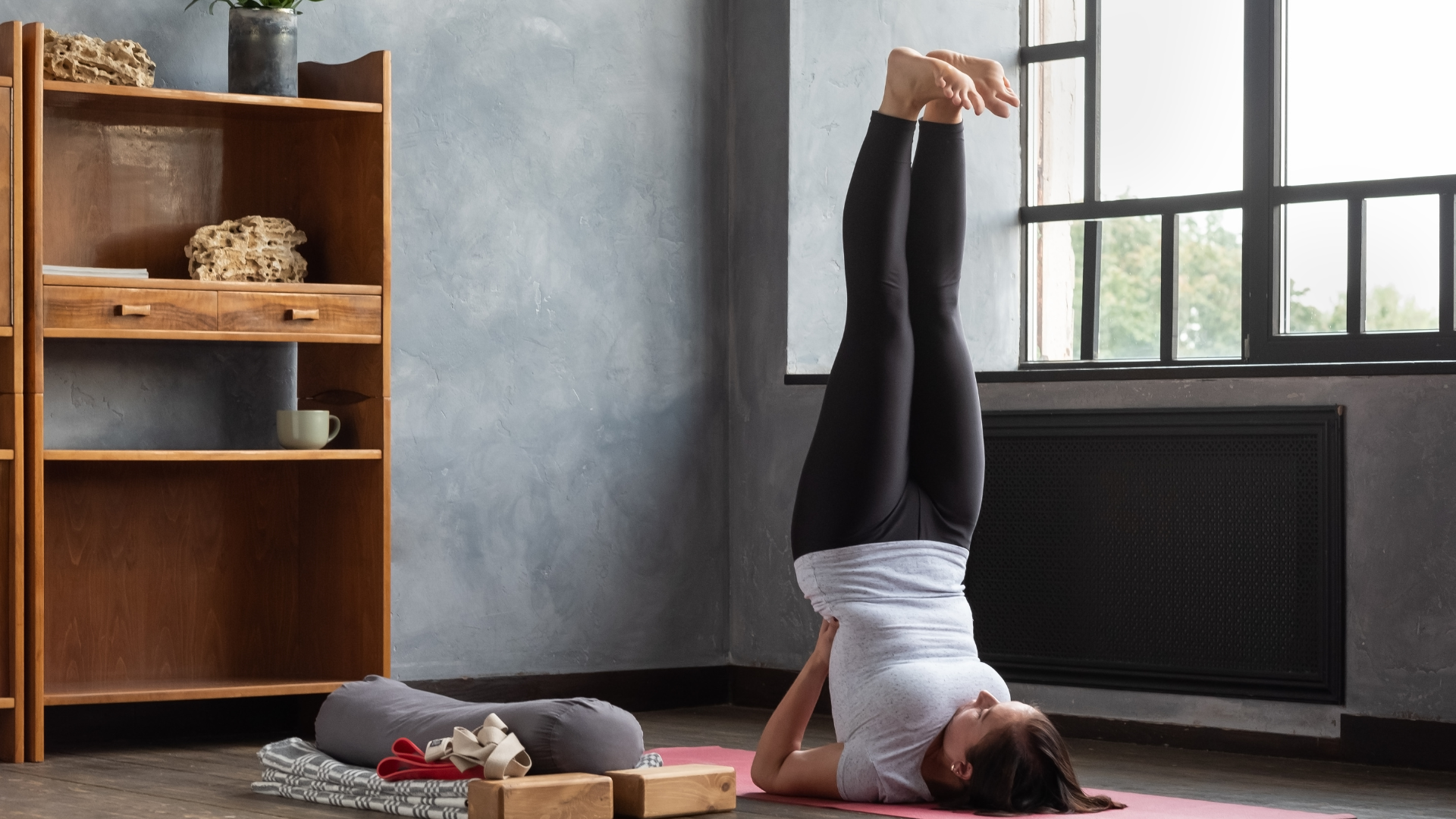
5. Seated Forward Bend (Paschimottanasana)
A gentle hamstring stretch that also calms the nervous system. Sit with your legs extended, reach toward your feet, and relax into the stretch.
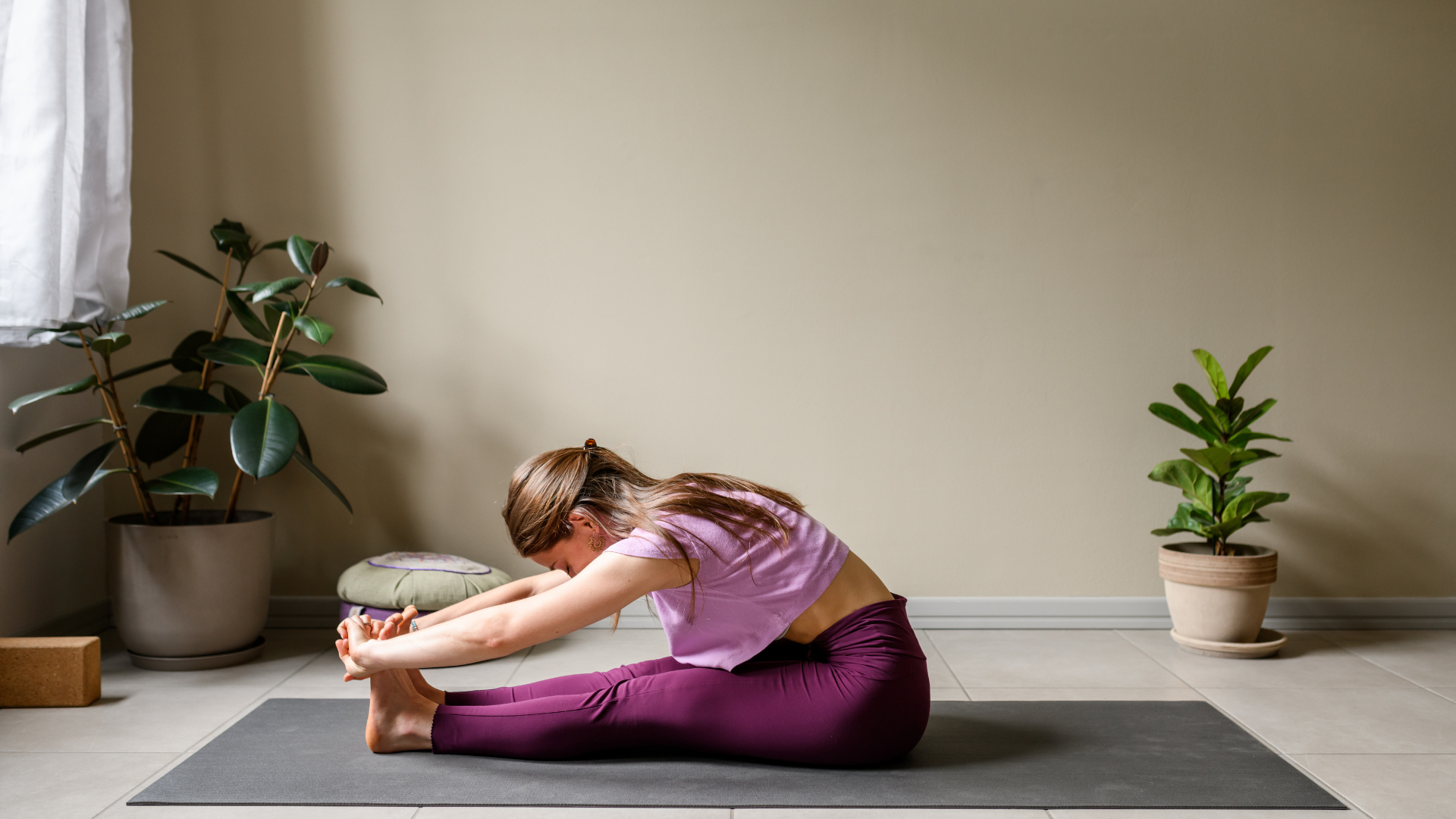
Emotional Benefits of Postpartum Yoga
Postpartum yoga is not just about rebuilding physical strength — it also works wonders for your emotional well-being. New moms often experience mood swings, stress, or even postpartum blues due to hormonal changes and lack of sleep. Yoga provides a calm space where you can slow down, breathe deeply, and reconnect with yourself.
Studies show that yoga helps reduce anxiety and boosts serotonin, the “feel-good” hormone, which can make you feel lighter and more balanced. Even 15–20 minutes of gentle yoga a day can lift your mood and help you feel more confident as you adjust to your new role as a mother.
This emotional reset is one of the most beautiful gifts yoga offers during the postpartum phase — reminding you that caring for yourself is just as important as caring for your little one.
Research findings are inspiring: a 2024 review published in Postnatal Journal found that postnatal yoga significantly decreased symptoms of depression while improving psychological well-being and quality of life among new mothers
Building a Stronger Connection with Your Baby
One of the most heartwarming aspects of postpartum yoga is that you can include your baby in your practice. Many moms practice gentle stretches while keeping their baby close on a mat or even in their arms during simple movements. This not only helps you stay active but also strengthens the bond between you and your little one.
Baby-and-mom yoga sessions are becoming popular worldwide, as they combine exercise with playtime. The soothing rhythm of your breath and gentle movements creates a calming environment for your baby. Some mothers even notice their babies responding with smiles, coos, or relaxation when they join in!
Postpartum yoga, when shared with your baby, turns into a bonding ritual — helping you both feel safe, calm, and deeply connected.
A Word on Being Gentle with Yourself
Mama, you just did something incredible! Whether you delivered vaginally or had a C-section, your body went through a huge transformation. Yoga can help you reconnect with yourself, but it’s not about getting back to your pre-pregnancy self. It’s about finding a new normal and embracing the amazing changes your body has been through.
At Patanjalee Shyambhai Yoga, our online yoga classes are tailored to meet you where you are, whether you’re 4 weeks postpartum or 8 weeks post-C-section. Our goal is to help you gently ease back into movement, rebuild strength, and feel empowered in your body again.
So, grab that yoga mat (or maybe a soft blanket while the baby’s napping), take a deep breath, and know you’ve got this!
